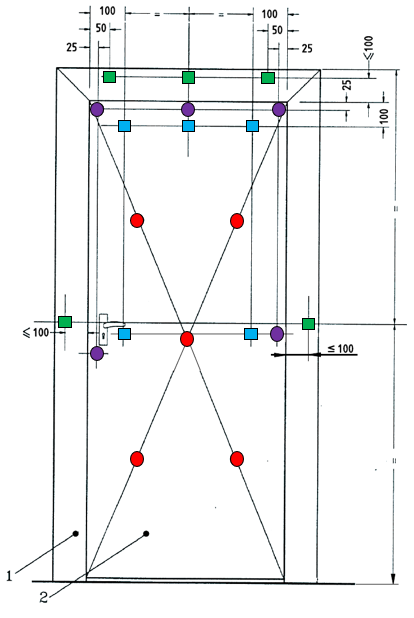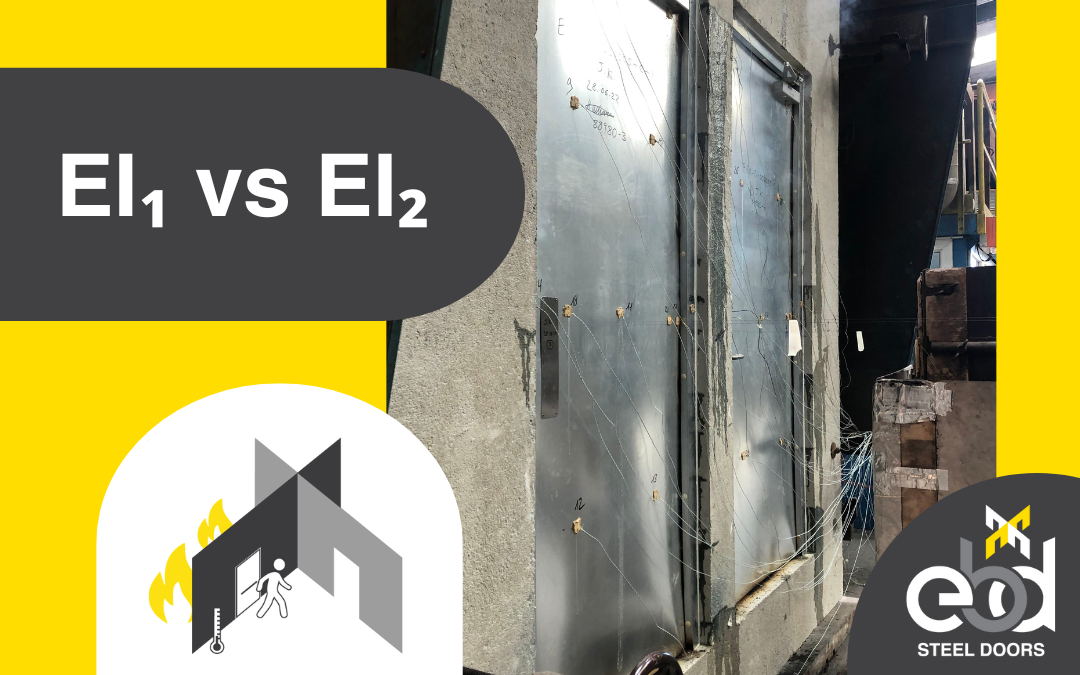Understanding the Difference Between EI1 and EI2 Fire Resistance Classifications for Steel Doors
What Do EI1 and EI2 Stand For?
Both EI₁ and EI₂ are part of the European classification system for fire-resistant doors, based on the EN 13501-2 standard. This system evaluates a door’s performance in terms of two critical criteria:
- E (Integrity): The door’s ability to prevent flames and hot gases from passing through.
- I (Insulation): The door’s ability to limit the temperature rise on the unexposed side.
The numbers following EI₁ and EI₂ represent the duration in minutes that the door maintains its integrity and insulation properties during a fire. An example being, EI₂60 (60 minutes integrity and insulation).
EI1 and EI2 Fire Doors:
1. EI1 Doors:
- Higher Insulation Standard: EI₁ doors offer a higher level of fire insulation performance. They maintain the temperature on the unexposed side of the door and frame at a lower threshold compared to EI₂ doors.
- Temperature Limits: EI₁ doors limit the temperature rise to an average of 140°C and a maximum of 180°C at any point on the unexposed side.
- Applications: Required in specialist applications for maximum protection. EI₂ is a more commonly requested application across Europe.
- Thermocouples Positions: They are positioned 25mm from the edge of the leaf and are influenced more aggressively by heat conduction.
2. EI2 Doors:
- Standard Insulation Level: EI₂ doors have a standard level of fire insulation performance, which is slightly less stringent than EI₁.
- Temperature Limits: EI₂ doors allow for higher temperatures on the unexposed side, with an average rise of 140°C and a maximum of 180°C at any point.
- Applications: Often used in more general applications which require fire insulation performance.
- Thermocouples Positions: They are positioned 100mm from the edge of the leaf.
Additional Information:
- Testing Standards: Both types of doors are tested according to EN 1634-1: 2014 + A1: 2018 and classified according to EN 13501-2: 2023.
- Construction: Both door types are constructed from materials that ensure integrity and insulation but differ in the specifics of their thermal insulation capabilities.
- Missing Subscripts: If the subscript 1 and 2 are missing, you can assume performance relates to EI₂.
- EI Rating: Likewise, walls can be classified to be rated EI60, although the 1 and 2 subscripts are only applicable to doors.
Example from EBD Steel Doors – EBD65-FireEI:
- Classification: EI₂ fire resistance performance up to 60 minutes.
- Construction: Hot dipped galvanised steel with a thermal insulating core.





